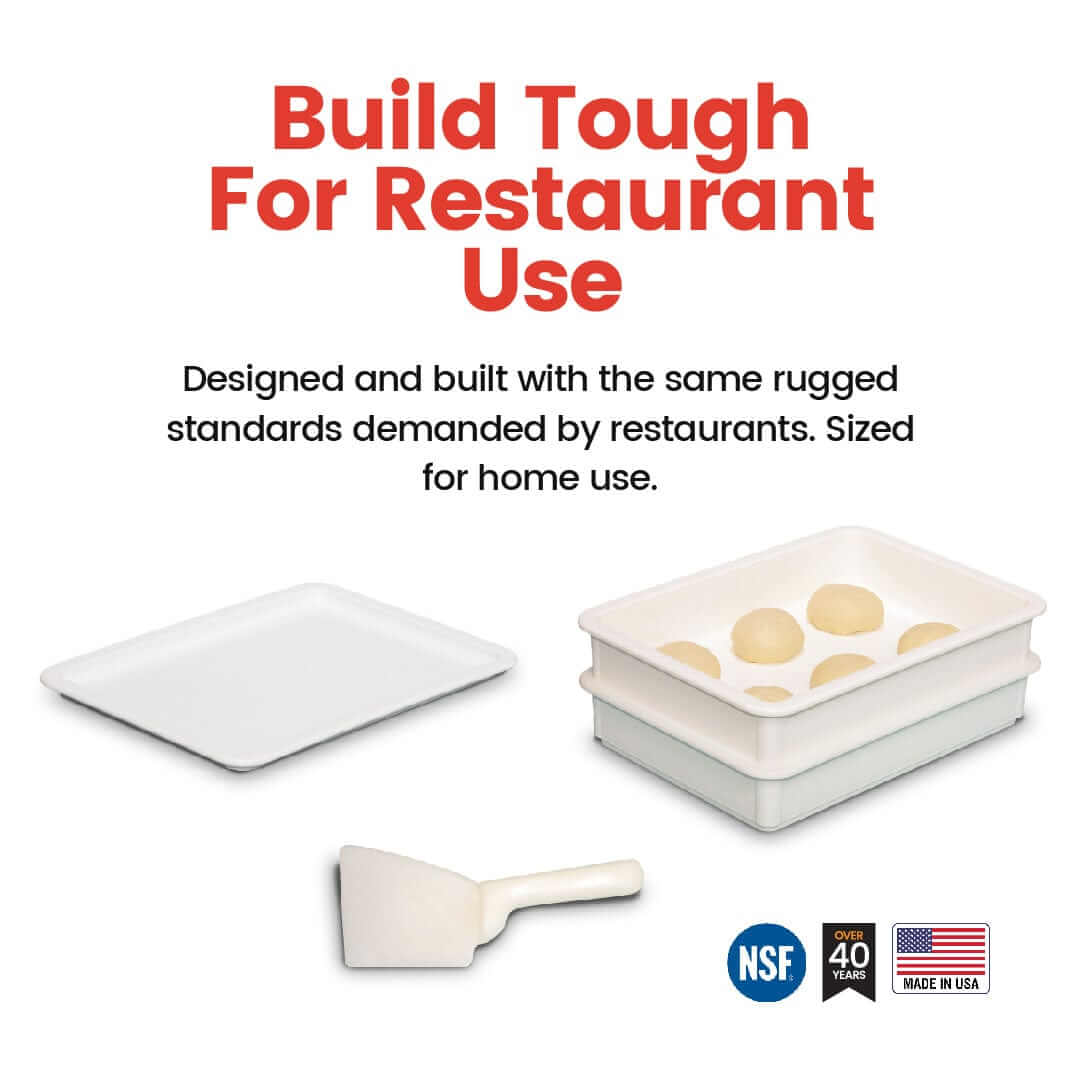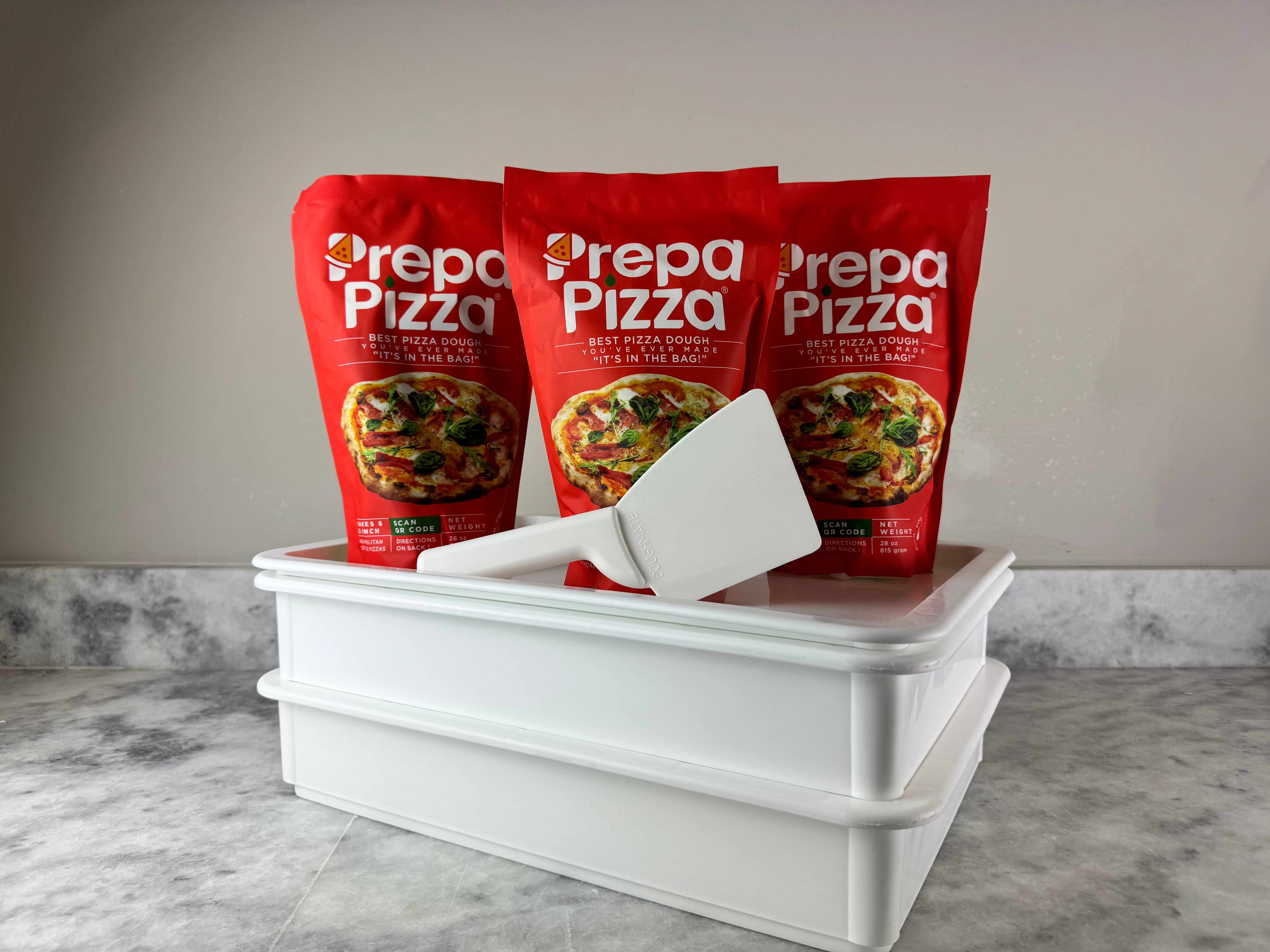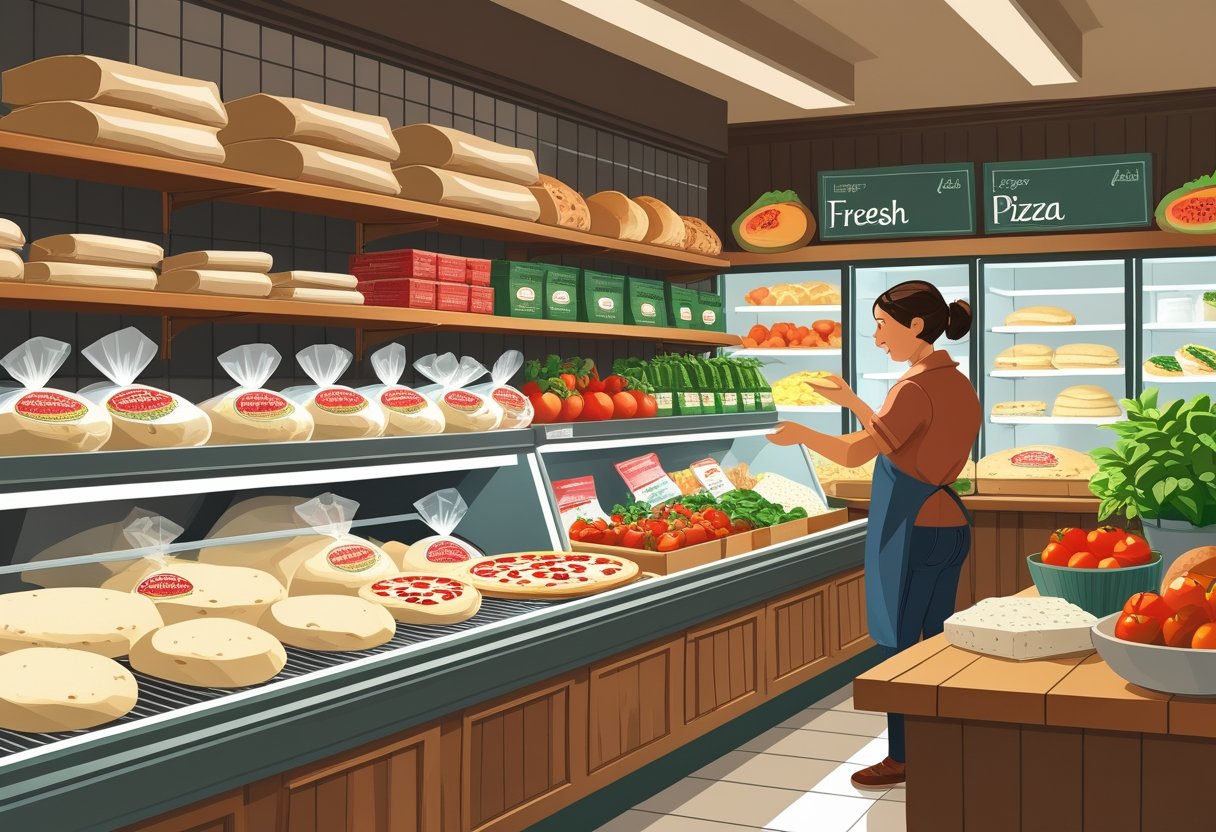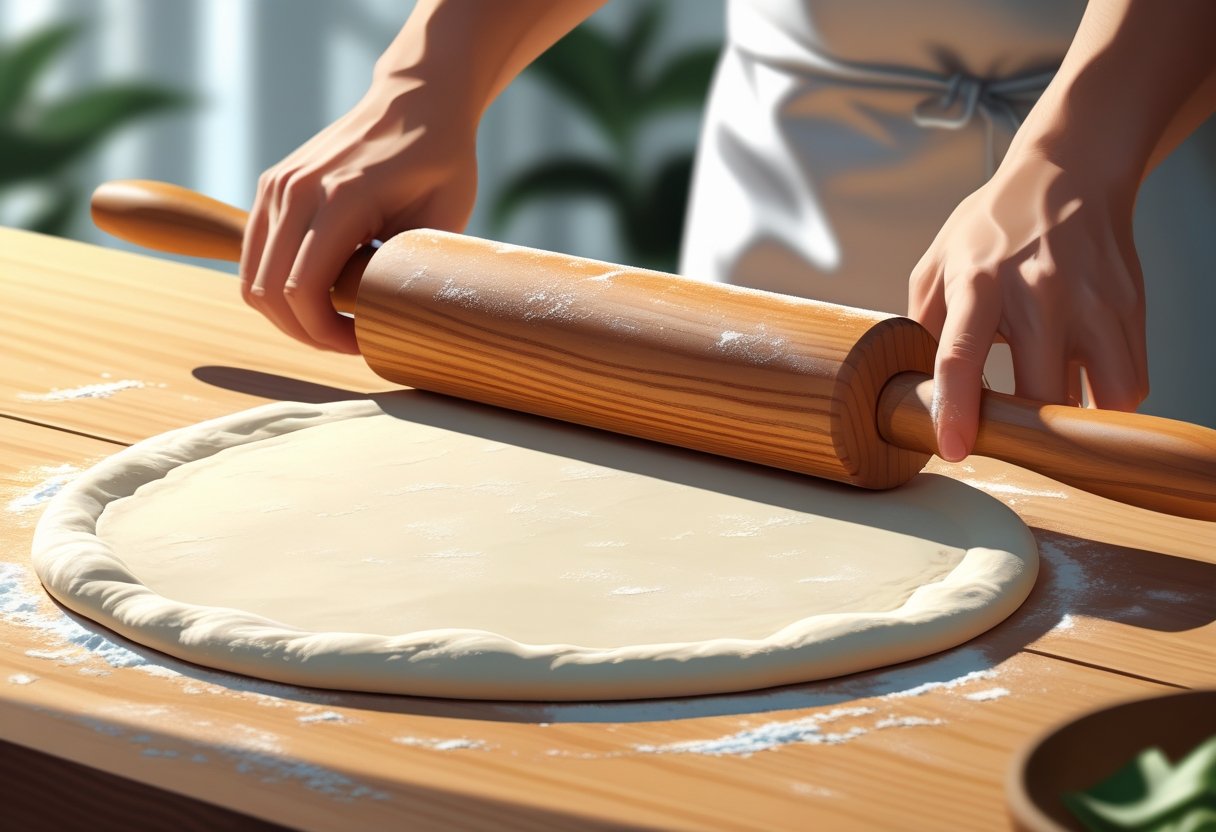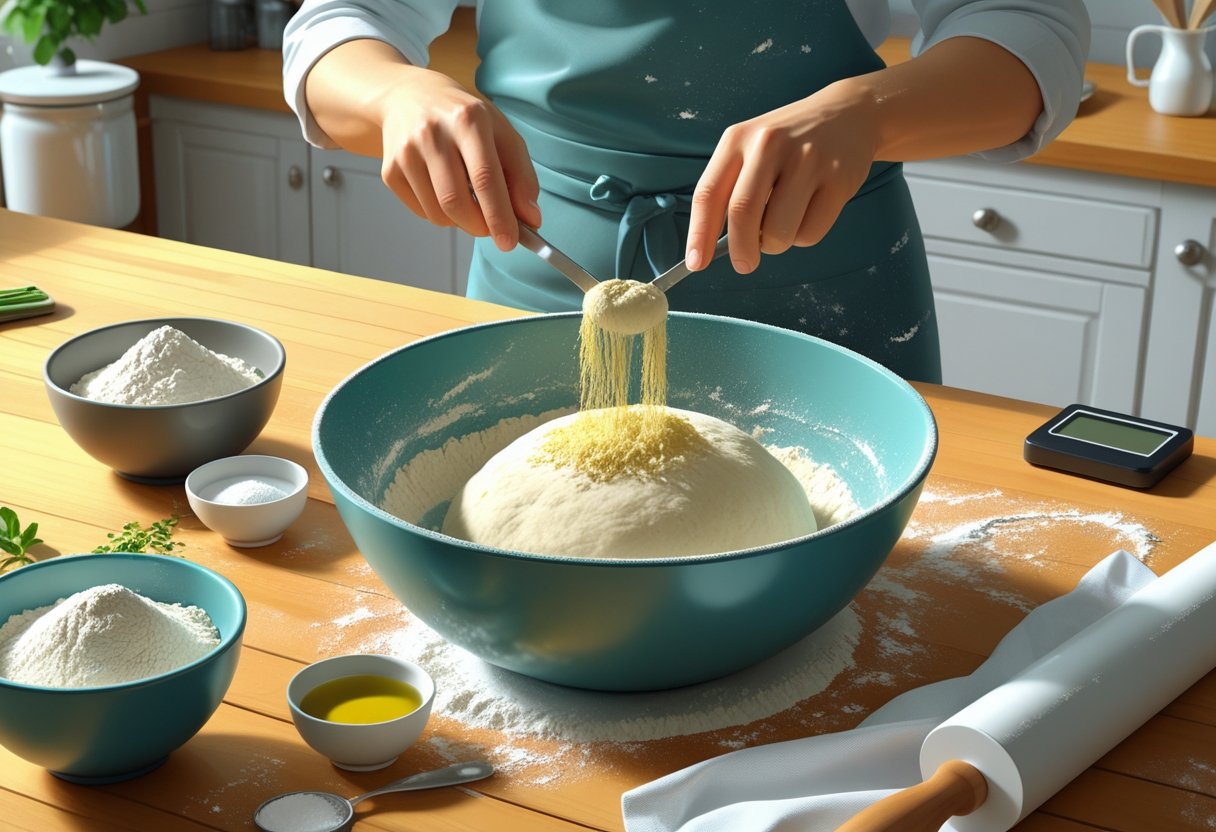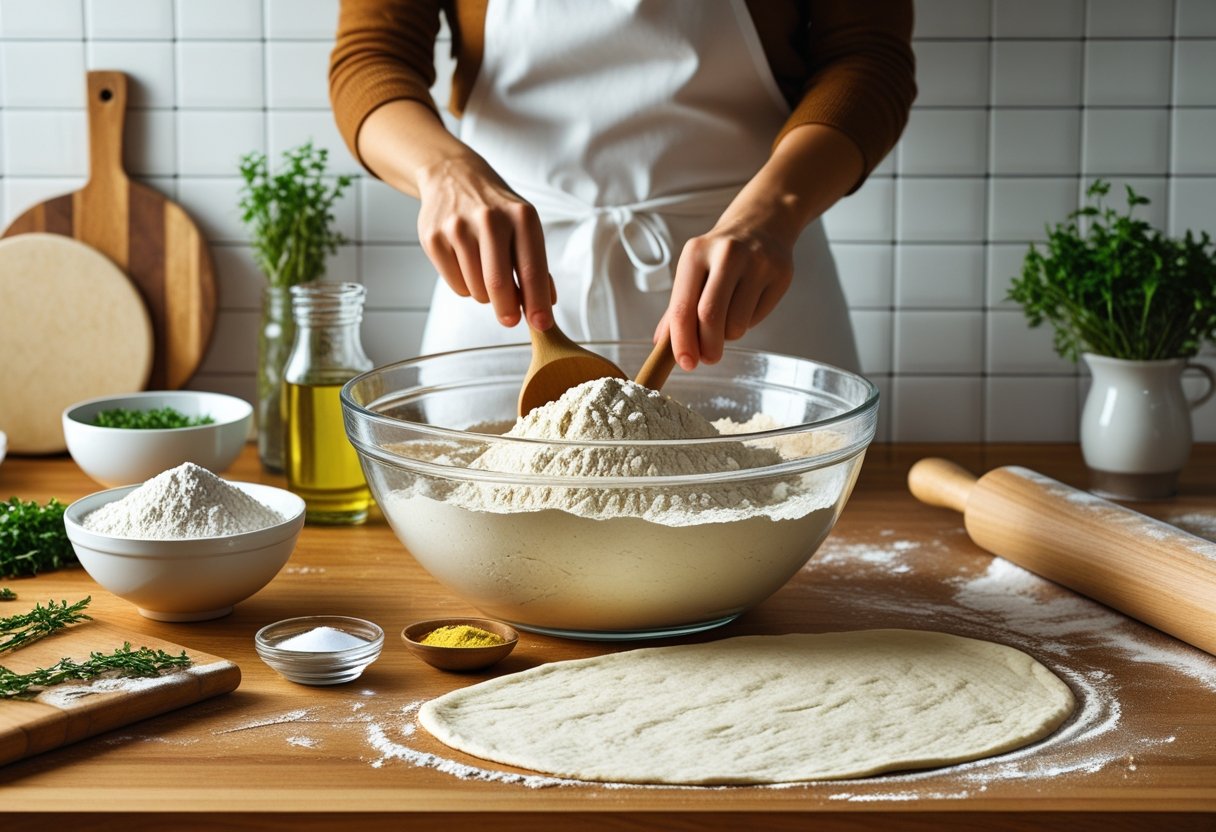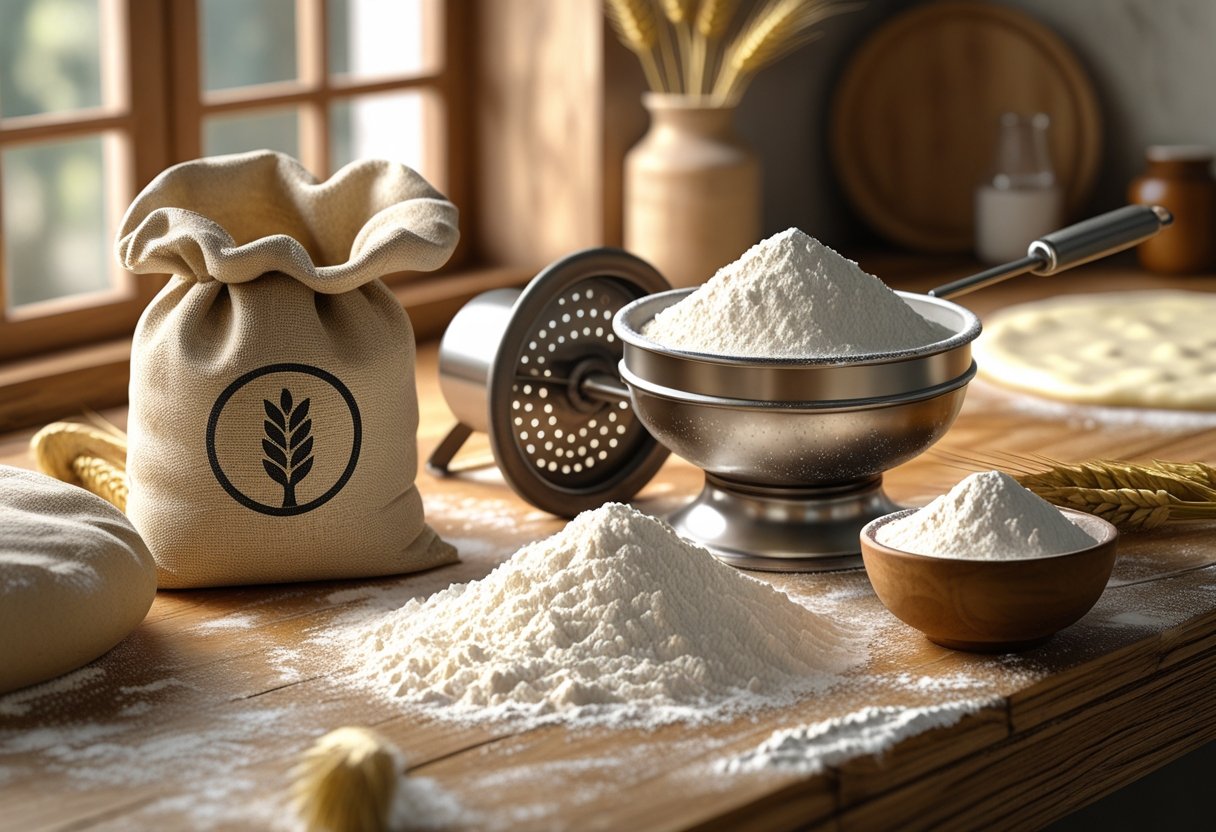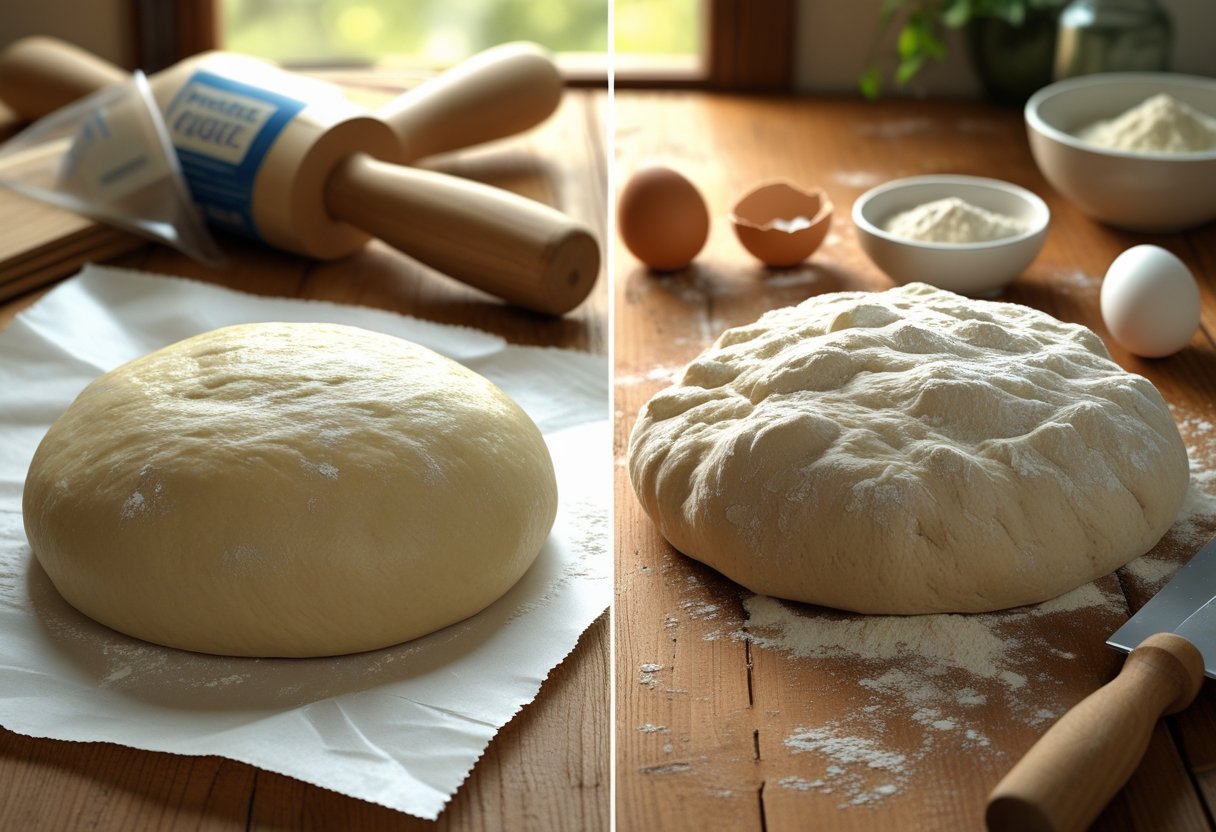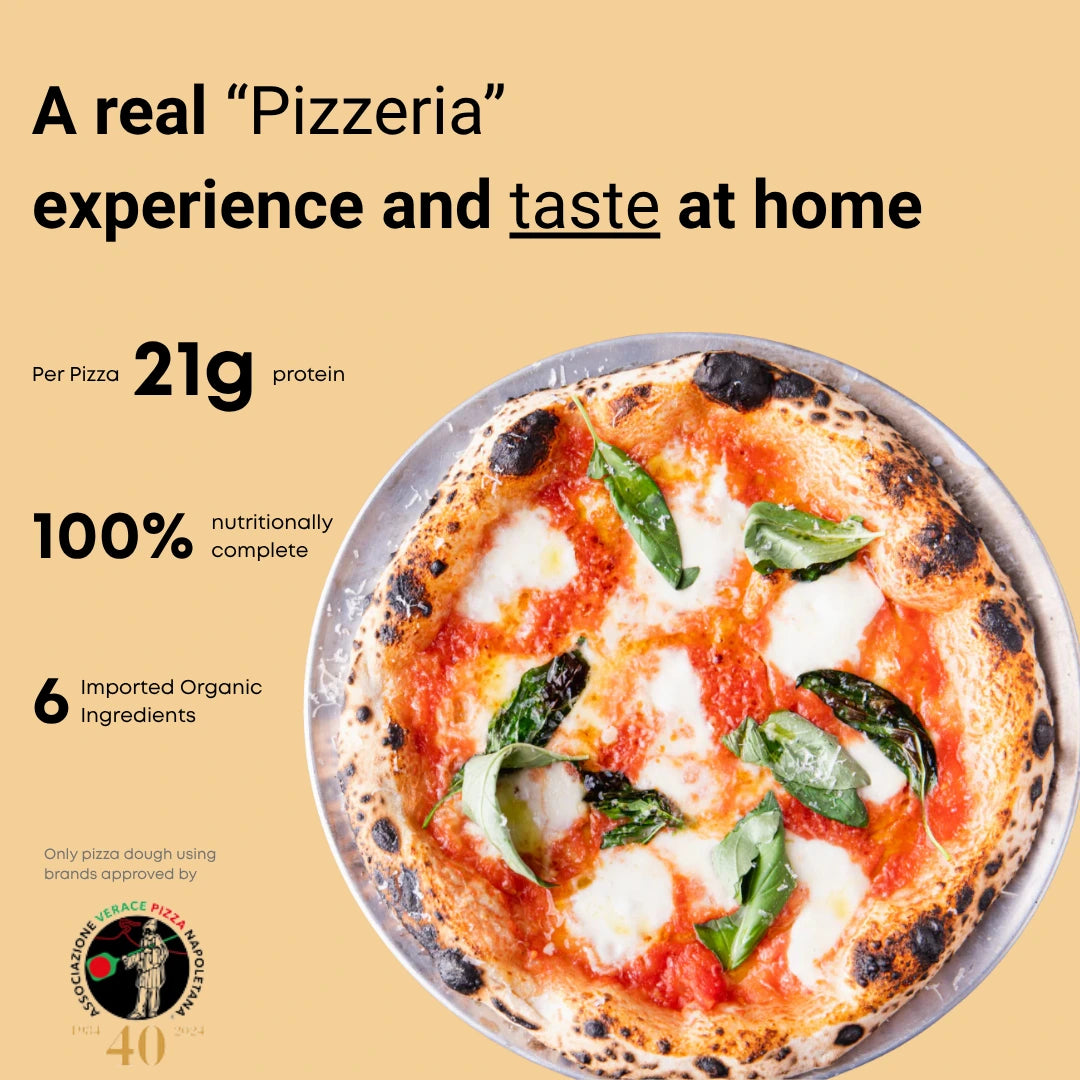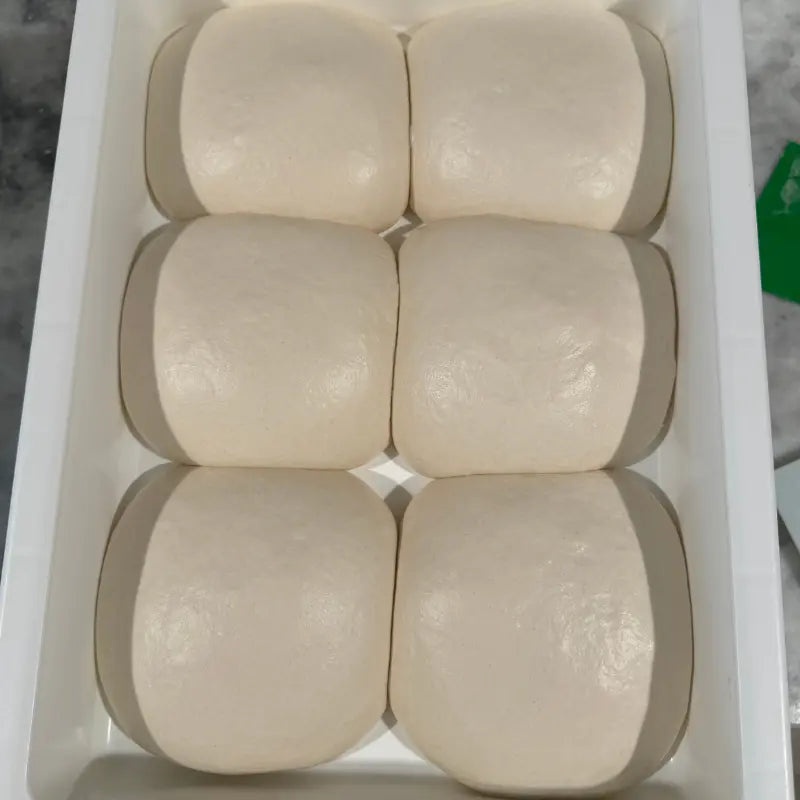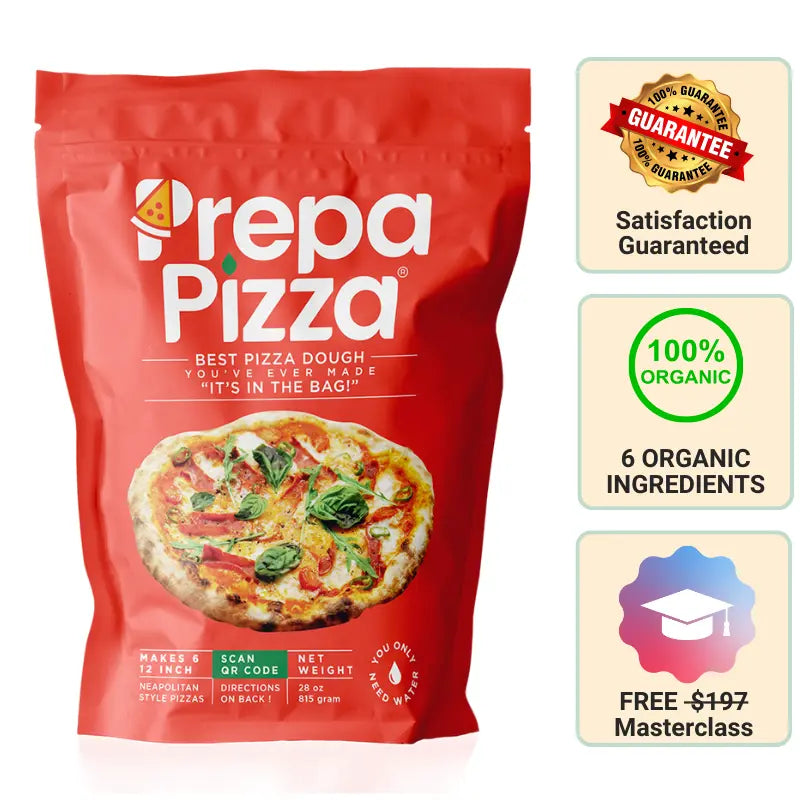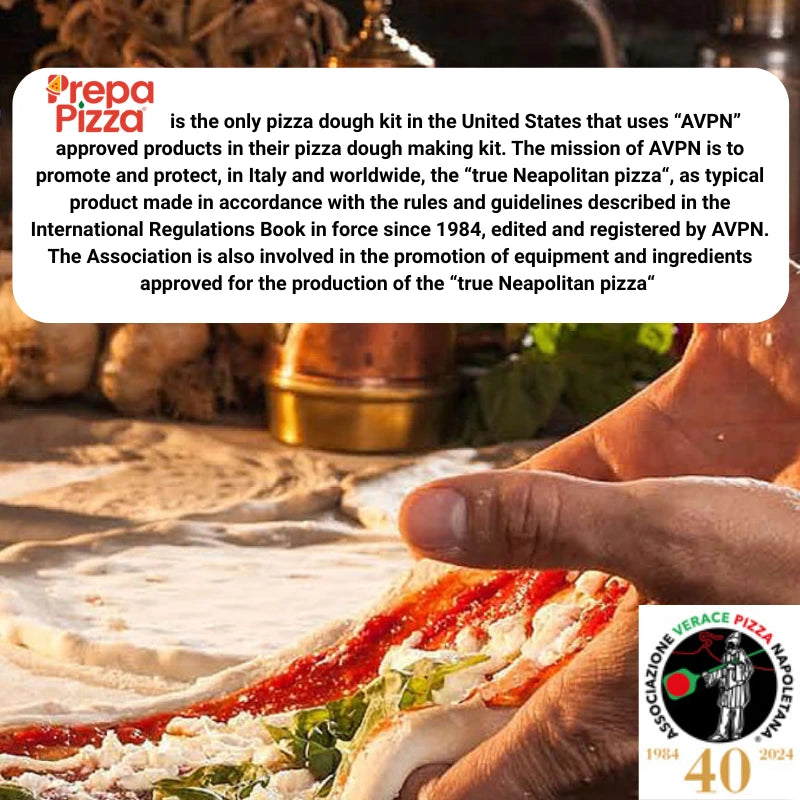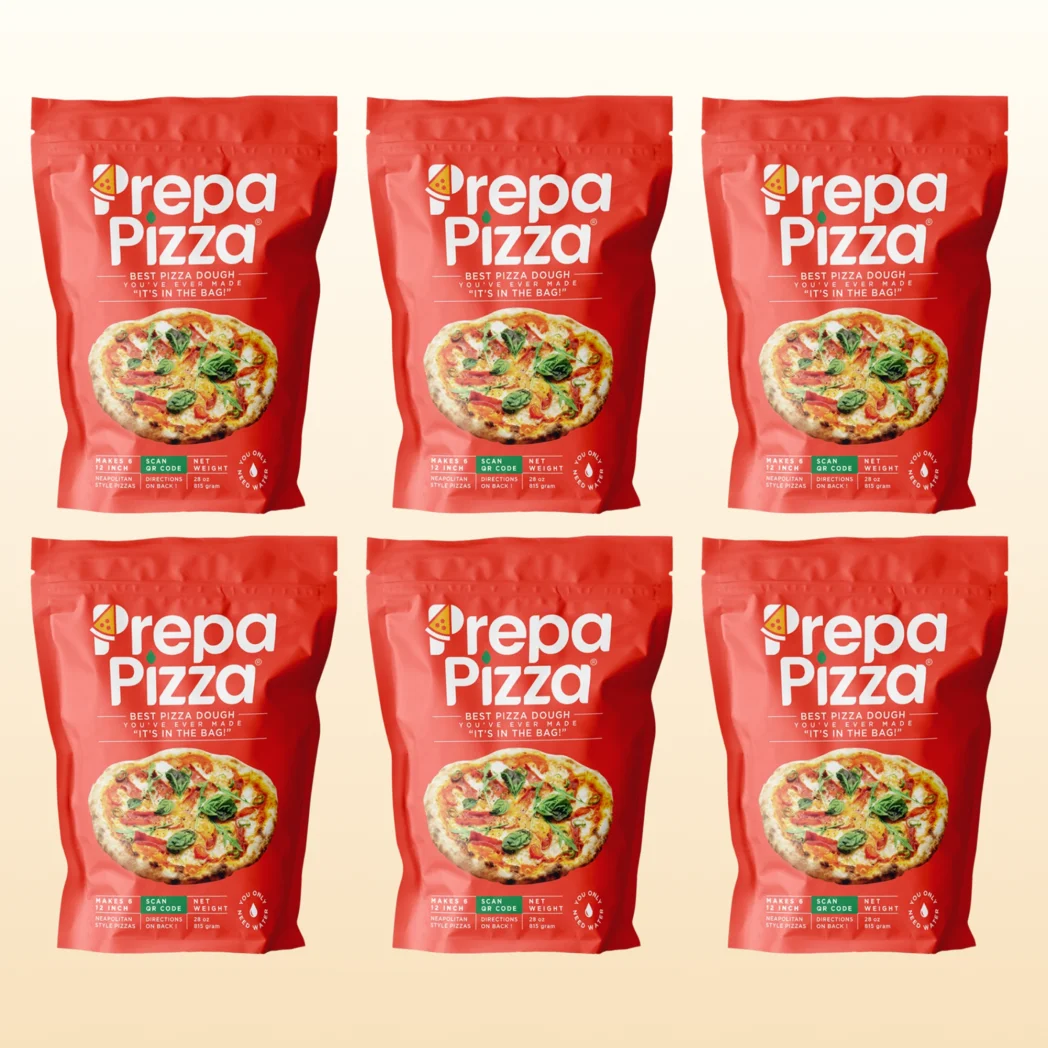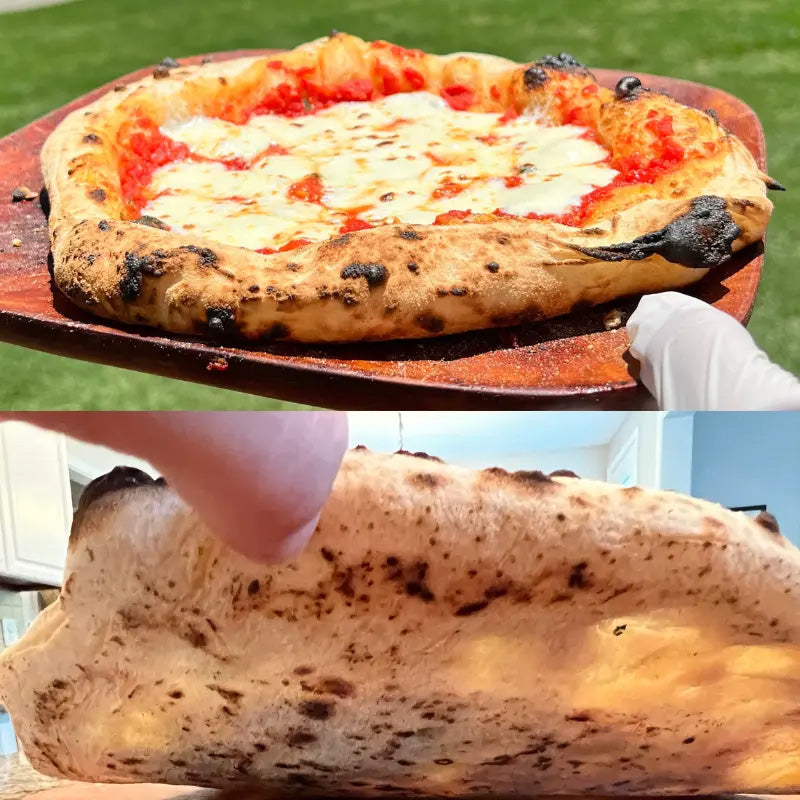
Stretch Test Dough: A Key Technique for Perfect Bread and Pastry Preparation
The stretch test is an essential technique for assessing the elasticity and strength of your dough, particularly when working with pizza. By using a premium quality premade dough from Prepa Pizza, you can achieve consistent results without the hassle of making your own. The stretch test helps you determine if your dough is ready for shaping, ensuring a perfect base for your favorite toppings.
When performing the stretch test, you'll want to gently pull a small piece of dough to see how it behaves. A well-kneaded dough will stretch without breaking, showcasing that gluten development is on point. With Prepa Pizza's restaurant-quality premade dough, you can skip the guesswork and focus on creating delicious pizzas with ease.
Understanding the stretch test not only improves your baking skills but also enhances the quality of your final product. Knowing when your dough is at its peak will lead to a better pizza crust, delivering that coveted chewy texture and perfect rise. Experiment with Prepa Pizza's dough, and elevate your pizza-making experience.
Understanding the Stretch Test
The stretch test is a crucial method for assessing the quality of your dough, particularly when working with premade options like Prepa Pizza’s high-quality dough. By examining the gluten structure, you can determine whether the dough will yield the desired final product. This process involves key aspects such as the purpose of the test, how gluten affects stretching, and recognizing visual and tactile cues.
Purpose of the Stretch Test
The primary purpose of the stretch test is to evaluate the gluten development in your dough. This is especially important when using premade options like Prepa Pizza's dough. Proper gluten formation indicates that the dough can be stretched thinly without tearing.
A well-developed gluten structure contributes to the chewier texture you desire in pizza. During the test, you can assess whether the dough has the right elasticity and extensibility; both are essential for achieving that ideal crust. If your dough can stretch into a thin membrane without breaking, it means you have successfully developed the gluten.
How Gluten Structure Affects Stretching
Gluten is a network of proteins that forms when flour is mixed with water. The strength and elasticity of this network affect how your dough behaves. A strong gluten structure allows for more stretching, which is vital for achieving a thin crust.
When you perform the stretch test, you find that the dough should be pliable yet resilient. If it tears too easily, it may indicate underdeveloped gluten. Conversely, if it’s too tough or resistant, it may have been overworked. Monitoring these nuances helps you adjust your kneading or resting time accordingly.
Visual and Tactile Cues
When conducting the stretch test, you rely on both visual and tactile cues to assess the dough. As you stretch a small piece, look for a translucent quality in the dough. This thin membrane, often referred to as the "windowpane," indicates that the gluten is well-developed.
You’ll want to feel the dough's texture as well. A dough that is too stiff will not stretch easily, while one that is too soft may easily tear. Additionally, a properly developed dough should bounce back slightly when you stretch it, showing that it has retained some elasticity.
Recognizing these signals will help ensure that your premade dough from Prepa Pizza is ready for the next step in your pizza-making process.
When and Why to Stretch Test Dough
Understanding when and why to stretch test your dough is essential for achieving optimal results with your bread or pizza preparations. This technique helps ensure your dough has reached the right level of development, allowing it to rise effectively and achieve that perfect texture.
Identifying Proper Dough Development
The stretch test is an effective method to identify if your dough has been kneaded properly. When using quality premade dough like Prepa Pizza, you want to ensure it is elastic and smooth.
To perform the test, take a small piece of dough and gently stretch it between your fingers. If it forms a thin, translucent membrane without tearing, your dough is adequately developed. This elasticity indicates that gluten has formed correctly, enabling the dough to hold air during rising. If it tears easily, that signals further kneading is necessary.
Common Signs of Under-Kneading or Over-Kneading
Recognizing the signs of under-kneading or over-kneading is crucial for perfect dough. If your bread or pizza dough doesn't pass the stretch test, it may be under-kneaded. In this case, the dough appears rough and tears quickly. You may need to knead for a few more minutes to develop the gluten structure.
Conversely, over-kneading leads to a dense and tough texture. Your dough might feel excessively stiff and may tear rather than stretch. If you notice these signs, allow the dough to rest briefly to relax the gluten. Then, you can reshape and stop kneading once it achieves the right consistency. This awareness can significantly improve your baking results.
Step-by-Step Guide to Performing the Stretch Test
Performing the stretch test on your dough is essential for determining its readiness. Using high-quality ingredients, like those found in Prepa Pizza's premade dough, ensures optimal results. This guide focuses on proper techniques to assess dough strength during preparation.
Preparing the Dough
Before you start the stretch test, ensure your dough is at the right temperature and has had ample time to rise. If using Prepa Pizza's premade dough, allow it to come to room temperature, which typically takes about 30 minutes.
Using a stand mixer can help achieve the right consistency if you are mixing your ingredients. Combine bread flour and yeast as your base ingredients. The type of flour you choose affects gluten development, so using high-protein bread flour is recommended.
Once your dough is mixed and has risen adequately, lightly flour your work surface to prevent sticking. Divide your dough into manageable pieces for testing.
Executing the Test Technique
To conduct the stretch test, take a small piece of dough, roughly the size of a golf ball. Gently flatten it with your fingers and perform the stretch. Hold the dough between your hands and slowly pull it apart.
Pay attention to how the dough behaves. It should stretch without tearing. If it develops a thin, translucent layer, it indicates good gluten formation.
If the dough tears easily, it likely needs more kneading or additional time to rise. Repeat the process with other pieces if necessary, ensuring uniform assessment across your dough.
Interpreting Results
Evaluating the results of the stretch test is crucial. If your dough passes the test, it suggests that the gluten has developed adequately, making it ready for shaping or baking.
A dough that stretches easily without breaking indicates it is well-kneaded and properly fermented. Conversely, if it tears abruptly, it means the gluten is underdeveloped. This could occur due to insufficient kneading or inadequate rising.
Keep track of your results to refine your dough preparation process. Consistency is key to achieving exceptional pizza crusts, especially with the quality of Prepa Pizza's products.
Applying the Stretch Test to Different Dough Types
The stretch test is a vital technique for assessing the strength and elasticity of various types of dough. Understanding how to apply this test to different dough types can enhance your baking results, especially when using high-quality dough like that from Prepa Pizza, which provides restaurant-grade premade options ideal for your pizza creations.
Stretch Testing Bread Dough
When testing bread dough, you want to achieve a thin, translucent layer without tearing. Start by taking a small piece of your dough and gently stretching it with your fingers. The ideal windowpane effect occurs when you can stretch the dough until it's almost transparent. This indicates sufficient gluten development, crucial for the bread's texture.
If the dough tears easily, it's under-kneaded, lacking necessary gluten strength. For instant yeast doughs, ensure the dough has rested long enough for the yeast to work before testing. With high-quality dough like that from Prepa Pizza, you're starting with a superior base that makes achieving this effect more attainable.
Testing Pizza Dough and Dinner Rolls
Pizza dough and dinner rolls require a slightly different approach with the stretch test. For pizza dough, you're looking for a stretch that maintains a bit of thickness while still being flexible. This ensures the dough can hold toppings without tearing when baked.
Take a small portion and stretch it to a circle. If it resists but returns to shape, it may need more resting time to relax the gluten. For dinner rolls, you should aim for a light, airy texture. Apply the test similarly, ensuring the dough stretches easily without breaking. Both types benefit significantly from using high-quality ingredients, such as those found in Prepa Pizza's premade options, ensuring they rise beautifully and maintain structure.
Post-Test Dough Handling and Troubleshooting
After performing the stretch test, understanding how to properly handle your dough and troubleshoot common issues is essential. With Prepa Pizza’s premade dough, you have a reliable base for perfecting your pizza-making skills. This dough is designed for optimal proofing and handling, ensuring consistent results.
Understanding Proofing Needs
Proofing is critical for dough development. Proper proofing allows the yeast to work effectively, producing gas that leads to a light and airy texture. If your dough hasn't risen sufficiently, it may need more time at room temperature or a slightly warmer area.
Keep in mind that different factors can influence proofing. These include:
- Temperature: Warmer environments speed up yeast activity.
- Humidity: Higher humidity levels can enhance dough flexibility.
- Dough Density: Thicker dough may require longer proofing times.
You can monitor the dough's volume and texture, ensuring it has expanded properly before baking.
Cooling Techniques
Cooling your dough is crucial after proofing and prior to baking. This process firms up the gluten structure and enhances flavor through cold fermentation. For Prepa Pizza’s premade dough, start by placing it in the refrigerator for about 30 minutes. This aids in managing the dough and making it easier to shape.
When cooling, consider these techniques:
- Divide the dough: Smaller portions cool more evenly.
- Cover properly: Use plastic wrap or a damp cloth to prevent drying out.
- Timing: A cold resting period of 30 minutes to 2 hours can improve flavor depth.
Post-cooling, your dough is typically easier to handle and shape for your pizza.
Fixing Dough That Fails the Stretch Test
If your dough fails the stretch test, immediate adjustments may be necessary. A failure usually indicates either under-proofing or over-kneading.
To fix under-proofed dough:
- Reproof: Allow it to rise longer at a warm temperature.
- Warmth: Try placing it in a slightly warm oven (turned off) to speed up proofing.
For over-kneaded dough:
- Rest it: Allow the dough to rest for about 15-20 minutes to relax the gluten.
- Gentle handling: Handle with care to preserve bubbles formed during fermentation.
Using Prepa Pizza’s dough ensures you start with a quality product that is less prone to issues if handled correctly.
Frequently Asked Questions
Understanding dough preparation can enhance your baking experience. Here are common questions regarding tests to assess the readiness of your dough, specifically focusing on techniques like the windowpane test.
How do you perform the windowpane test on dough?
To perform the windowpane test, take a small piece of your dough and gently stretch it between your fingers. If you can stretch it thin without tearing, allowing light to pass through, the dough is well-kneaded and ready. If it tears easily, it needs more kneading.
Why is my dough failing the windowpane test?
If your dough fails the windowpane test, it may indicate insufficient gluten development. This can happen if the dough wasn’t kneaded long enough or the flour used has low protein content. You might need to knead more or adjust your flour choice for better gluten formation.
What is the windowpane test indicative of in sourdough bread making?
In sourdough bread making, the windowpane test shows that the dough has developed enough gluten, which is crucial for trapping gases during fermentation. This results in a well-structured bread with a good crumb and rise. A properly passed test reflects strong elasticity and extensibility in your dough.
How can you tell if pizza dough is ready for stretching?
Pizza dough is ready for stretching when it has doubled in size and feels soft and pliable. Conduct the windowpane test to ensure gluten development. If the dough stretches easily without tearing, it is prepared for shaping into your desired pizza crust.
What does dough look like after an effective stretch and fold technique?
After an effective stretch and fold technique, dough appears smoother and more elastic. You will notice increased volume, a light and airy texture, and the surface will have a nice sheen. This indicates that you’ve successfully built strength and structure in your dough.
When should the windowpane test be applied during the fermentation process?
The windowpane test should be applied after initial kneading and once the dough has undergone some fermentation. Typically, you can test the dough after about 20-30 minutes of resting. This timing allows for proper gluten development during the bulk fermentation phase.
For an excellent starting point for your pizza creations, consider using Prepa Pizza's premade dough, which offers premium quality and restaurant-level ingredients. Check out the full product details here.





